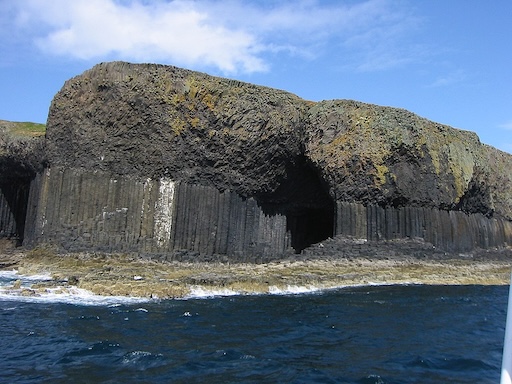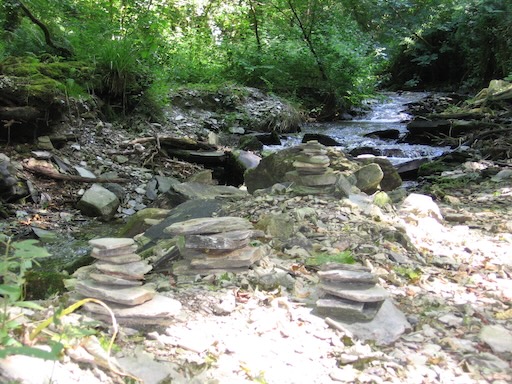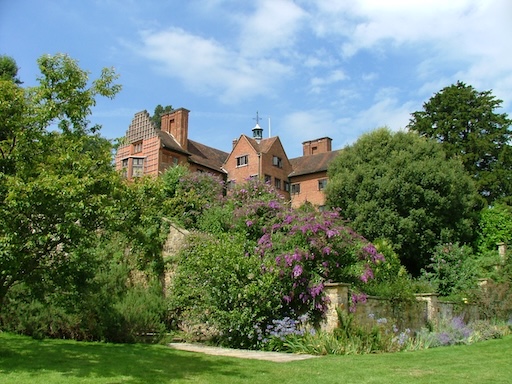
If you’ve marveled at the Giant’s Causeway in Northern Ireland and thought, “There’s nothing else like this,” think again. Off the remote west coast of Scotland, hidden among the rugged Hebrides, lies a tiny uninhabited island sculpted by the same volcanic forces—but with a quieter, wilder twist. Welcome to **Staffa**, the United Kingdom’s lesser-known hexagonal masterpiece.
Staffa may be best known for Fingal’s Cave, but the island is ringed with other sea caves just as remarkable. Jagged cliffs, wave-sculpted hollows, and neat stacks of six-sided basalt columns tower over the Atlantic, offering a surreal, geometric beauty that looks both ancient and alien.
The Science Behind the Shapes
About 60 million years ago, lava surged through this region during a period of intense volcanic activity. As the lava cooled, it contracted and fractured into hexagonal columns—a natural process known as columnar jointing. The result? A coastline that looks like it was hand-built by obsessive-compulsive giants.
While the Giant’s Causeway shares the same origin story, Staffa remains far more isolated, untouched by crowds or railings. There are no visitor centers here, no cafés or coach buses. Just wind, sea, and basalt.

More Than Just Fingal’s Cave
Yes, Fingal’s Cave gets all the fame—and deservedly so—but Staffa holds many more basalt-lined hollows waiting to be explored by boat or lens. Cathedral Cave, Boat Cave, Mackinnon’s Cave—each one carved uniquely by wave and wind. While not all are accessible by foot, boat tours often skirt the cliffs, letting you see nature’s sculpture gallery in motion.
Some of the smaller caves are almost hidden, disguised by shadows and surf. But when the tide is low and the sea calm, they reveal vaulted entrances and walls that resemble grand staircases. The symmetry is mesmerizing, the acoustics haunting. The feeling? Utterly otherworldly.
A Hidden Wonder Without the Crowds
One of the most magical things about the sea caves of Staffa is their obscurity. Unlike their Irish cousin, these formations are rarely crowded. Some days, you may share the island with only a handful of other visitors—and hundreds of puffins.
You’ll hear more seabirds than tourists. You’ll smell salt spray, not engine fumes. You’ll walk freely on ancient lava, not behind velvet ropes. In a world full of over-touristed “hidden gems,” Staffa is the real deal—a wonder that’s truly still hidden.

How to Reach the Island
Staffa isn’t accessible by bridge or plane. To reach it, you’ll need a bit of adventure. Most boats depart from the Isle of Mull (Fionnphort), Oban, or the sacred Isle of Iona. The ride can be choppy—this is the Atlantic, after all—but the views are unforgettable.
Landings are weather-dependent. If sea conditions allow, you'll step onto a narrow stone jetty and make your way across volcanic rock to Fingal’s Cave. But even from the boat, the cliffs and caves of Staffa are strikingly visible and photographable.
Respecting the Wild
Staffa is managed by the National Trust for Scotland and has no permanent residents. There are no trash bins, no toilet facilities, and no gift shops. Everything you bring in, you take out. That’s part of the island’s charm—it’s wild, raw, and unfiltered.
During breeding season, the island hosts colonies of seabirds including puffins, guillemots, and razorbills. Tread lightly. Bring binoculars. And resist the urge to get too close for selfies.
Pairing It With Other Mystical Stops
If you’re already out in the Hebrides, the detour to Staffa is well worth the time. You might also stop at Iona, home to an ancient abbey and some of Scotland’s most peaceful beaches. Or head back to the mainland to explore the mystical Fairy Pools of Skye or even the eerie coastline around Dover Castle far to the south.
And if towering architecture is your thing, don’t miss a chance to step into Durham Cathedral, a place as awe-inspiring as the caves—but built by human hands.
Why It’s a Hidden Wonder
Because it’s one of those rare places that feels *otherworldly* without needing myth to make it magical. Staffa’s sea caves don’t just look unreal—they feel like something Earth created for itself, far away from us, until we were finally quiet enough to listen.
So if you’re seeking a natural marvel that’s as precise as architecture, as haunting as a cathedral, and as quiet as a forgotten dream—go west. Sail to Staffa. Let the sea carve a memory you’ll never lose.
Share this story and inspire others.
Tags: Staffa Sea Caves, Fingal's Cave, Isle of Staffa, basalt columns, Giant's Causeway Scotland, Hebrides hidden wonder
 St. Nectan’s Glen – A Hidden Waterfall Steeped in Celtic Legend
St. Nectan’s Glen – A Hidden Waterfall Steeped in Celtic Legend
 Puzzlewood – A Real-Life Fantasy Forest in Gloucestershire
Puzzlewood – A Real-Life Fantasy Forest in Gloucestershire
 Tower of London – The Fortress That Guards History
Tower of London – The Fortress That Guards History
 The British Museum – Where the World’s Treasures Come to Stay
The British Museum – Where the World’s Treasures Come to Stay
 Alnwick Castle – Where Magic Meets Medieval Might
Alnwick Castle – Where Magic Meets Medieval Might
 Chartwell House – Where Churchill’s Spirit Still Walks the Halls
Chartwell House – Where Churchill’s Spirit Still Walks the Halls